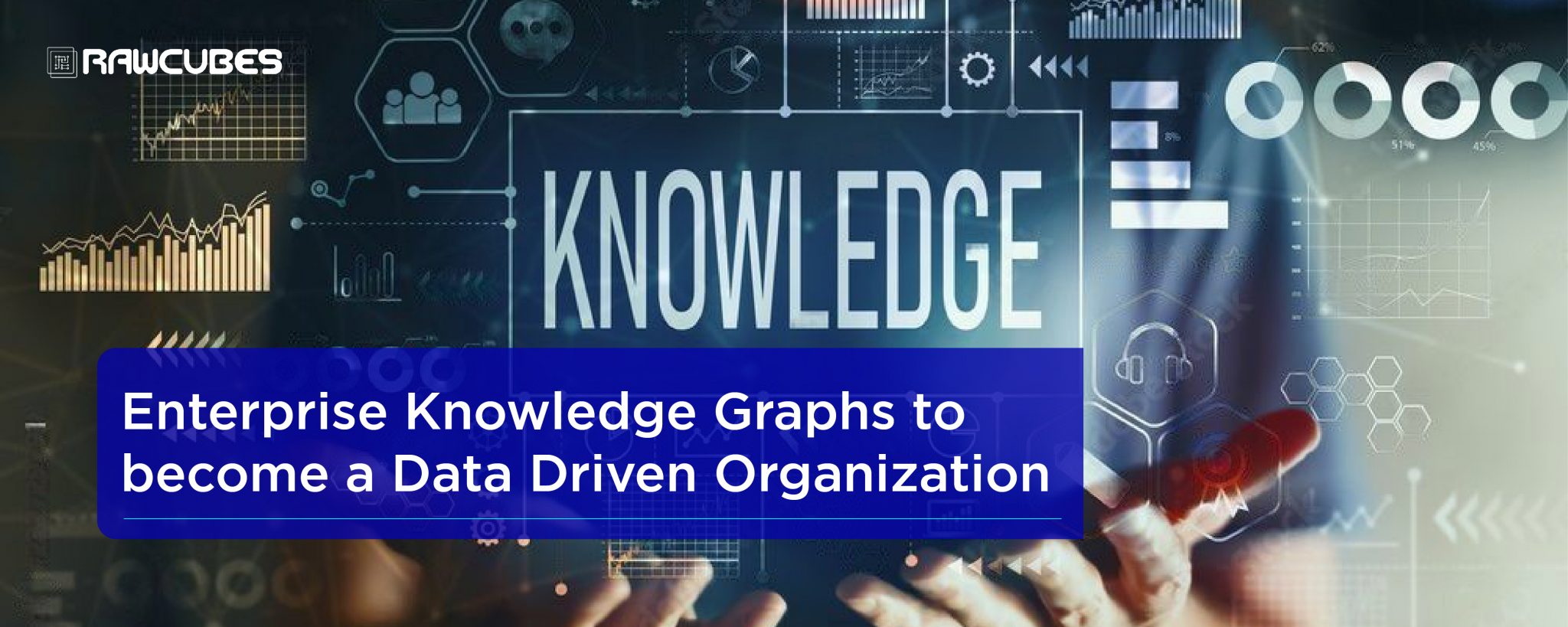Enterprise Knowledge Graphs to become a Data Driven Organization

Enterprise Knowledge Graphs paving the way for Integrating Quantitative and Qualitative Behavior Analysis
The enterprise knowledge graph is no more a buzzword. Instead, organizations of every scale are leveraging it for a variety of applications. Right from analysis of data semantics to quantitative interpretation of data, the enterprise knowledge graph serves as a connecting dot between qualitative and quantitative analytics.
The semantics can be collected from various knowledge sources to build a foundation-level knowledge or industry-standard semantic model. These can be built through publicly accessible data libraries, data from research studies, metadata repositories, and public ontologies.

Once you’ve collected the data, identifying relationships would be the next step. This will largely involve segmentation, identification, and analysis of raw data to refine and get insights that are useful to the business.
Two main pillars of the enterprise knowledge graph’s outlook need to be put into perspective. First is the identification of relationships to build business terms and corresponding relationships. The second is predictive analytics, which takes into account both behavioral and quantitative analysis.
Let’s understand the functions and application of the enterprise knowledge graph.
1) Relationships Identification
Companies are no longer concerned about their ability to build large data libraries. Instead, they’re focused on the data’s capacity to provide insights. Therefore, organizations should use enterprise knowledge graphs to assess how the data landscape has evolved and derive insights from it.
Enterprise knowledge graph, as a data aggregator, can be referred to as a development aimed at directly solving the challenges of volume, granularity, and unification by focusing on the degree of relevance of the insights rather than the numbers within data.
Companies aim to provide personalized experiences by creating personas, but the rising level of granularity makes it necessary to produce narrow segmentation which is becoming challenging. Enterprises can use enterprise Knowledge Graphs to solve the difficulty of merging quantitative and qualitative data to understand consumer behavior better.
Our knowledge graph allows a refined persona creation. It helps break down inter-organizational silos as data can be fed into the knowledge graph from various business units with insights shared across multiple functions. It also helps drive a diversified thought process by ensuring that individual bias is not overstated as data comes from multiple sources. This enables a more holistic view of consumers by integrating qualitative and quantitative analysis.
To integrate qualitative (unstructured) and quantitative (semi-structured) sources of data coming from a variety of sources, we need a connected, reusable, and flexible data foundation. A knowledge graph gives you connected data enriched with meaning, allowing multiple interpretations from the same data, which helps get answers to complex queries and derive insights more efficiently.
Once relationships are identified in an Enterprise Knowledge Graph, consumer behavior can be decoded through predictive analytics.
2) Predictive Analysis
Predictive analysis is an analytical approach to make predictions based on data by analyzing current and historical data. Let us discuss in detail how predictive analytics can help you to derive data insights more efficiently:
A. ForecastingAnalysis
Enterprise knowledge-graph-based predictive analytics helps you develop demand models that predict sales, revenue, financial statements, and investment documents which are crucial for identifying opportunities in areas for future positioning and understanding consumer sentiments. One such example is Dynamic Knowledge Graph-based Multi-Event Forecasting. Predicting actions from events of multi-type possibly happening on social sensors is vital for many domains of health care, disaster relief/recovery, and financial analysis.
B. Demand Pricing
Pricing products and services based on differences in elasticity of demand among various consumer segments are essential. Using knowledge-graph-backed predictive analytics, you can design experiments that can help businesses figure out multiple factors influencing the impact of price on demand which helps to develop the most promising pricing strategies that maximize the company’s financial growth.
C. Improve Customer Satisfaction
Statistics show that losing a customer can be much more expensive than retaining one. Therefore, predictive analytics can play a significant part in customer retention; Knowledge graph tools like conjoint analysis help companies pinpoint which product or service enhancements produce a more considerable improvement in customer satisfaction.
Thus, the shift from a traditional data warehousing approach to a dynamic modeling technique like semantic triples can help you revamp your data management and exploratory initiatives. You can unearth hidden insights and understand your consumers from an amalgam of qualitative and quantitative perspectives.
With Enterprise knowledge-graph-based relationship mapping, the contextualization of qualitative data empowers you with a crystal clear view of your consumers’ demographics. We at Rawcubes help you throughout the journey of Enterprise Knowledge Graph to transform your data into actionable insights! Contact us to discuss the true potential of the enterprise knowledge graph in your organization.